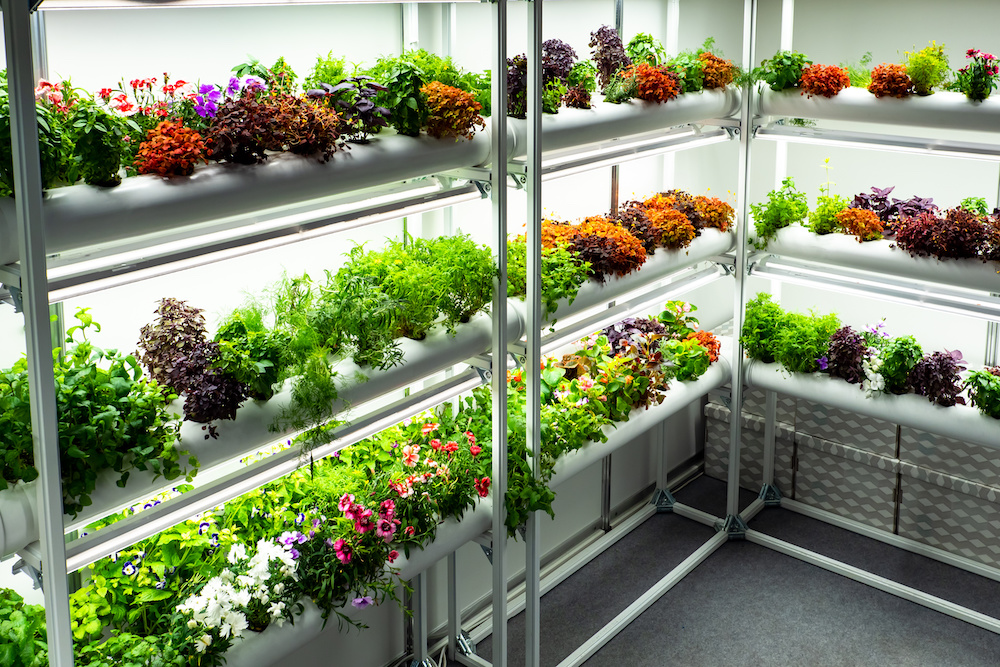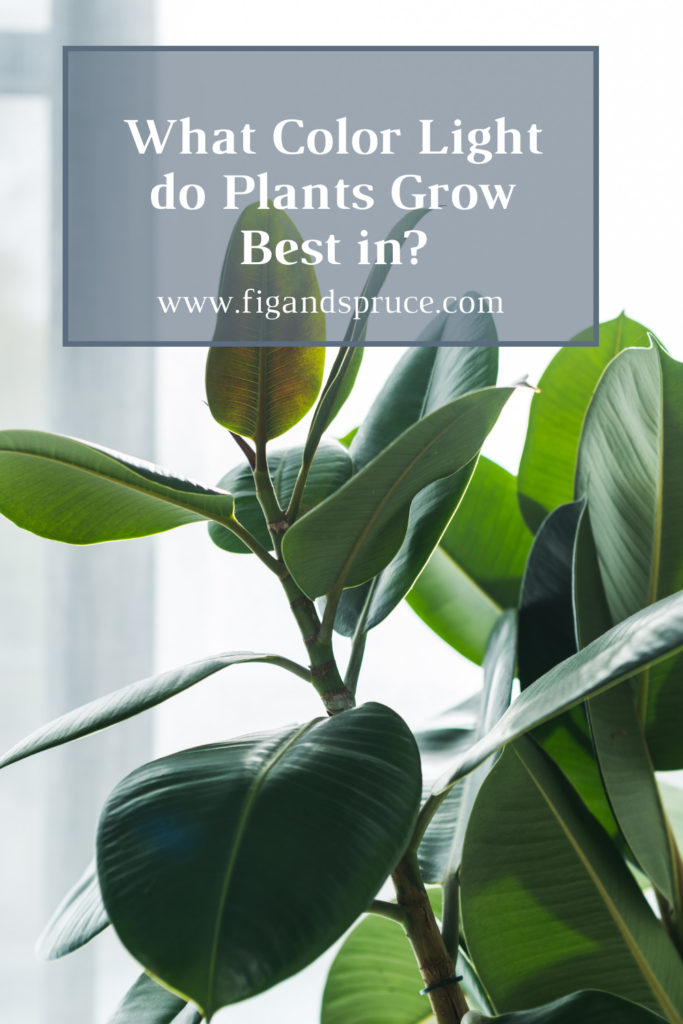If you’re interested or just starting with indoor gardening, you may have some idea about grow lights.
It is common for many to assume that the light color is just one, or multi-colored lights are just for style.
The color of the grow light is critical to the success of your indoor garden.
As such, the first question you may think of is, “What color light do plants grow best in?“
Table of Contents
What Are Grow Lights?
Cultivating plants could be viewed as a simple and straightforward hobby or job.
Unless you are into gardening, it is common to think that there isn’t much to it, from planting to maintenance.
That said, it requires a bit of dedication, equipment, and resources to grow and maintain a thriving garden, especially an indoor one.
To substitute the natural requirements for growing plants, you need to replicate the resources that nature provides.
These essential resources are mainly sunlight and several nutrients, so among the essential tools you need for indoor gardening is a grow light.
Importance of Grow Lights
Grow lights are a must-have if you aim to be successful in doing indoor gardening.
A grow light’s primary function is stimulating plant growth via artificial means.
This piece of tech is very useful in places that don’t have enough natural light or enough space for outdoor gardening.
It shouldn’t come as a surprise that there are different types of grow lights available in the market today.
The Different Types
Let’s check out which one brings the most value by having a better understanding of each kind.
- Fluorescent Lights
At one point, fluorescent lights are the go-to grow light for indoor gardeners.
Versatile, budget-friendly, and produces less heat, this type of grow light works best for growing seedlings.
It is safer than using incandescent bulbs, and there are two types of fluorescent lights: tube style and compact.
- Incandescent Bulbs
It is the first type of grow lights released. To this day, incandescent bulbs remain the most inexpensive option of them all.
While they may do the job on specific plants, they’re considered primitive, and their effectiveness could be suspect.
- HID Light
HID or High Intensity Discharge is famous for its brightness and light output. This type of grow light is used commercially worldwide.
The two-electrode, special gas-filled bulbs produce the light that comes from the HID.
Once electricity passes from one electrode to the other; it makes contact with the gas, generating intense light.
Today, there are two main types of HID lights: the MH(metal halide) and HPS (High Pressure Sodium).
CMH(Ceramic Metal Halide) grow light is a sub-category of MH. This new type of MH gives a balanced spectrum, lower heat output, and lasts longer than other HIDs.
- LED Lights
Light emitting diode or LED lights are the newest types of grow lights.
Not only limited to grow lights, LED lights are taking over the market as the top choice for electric-powered light sources.
This tech requires low power to generate power and emit almost no heat.
It can be programmed to simulate blue and red spectrums with 5700K color temperature.
While the LED is more dynamic and efficient than all of the grow lights listed, the light it emits is not as intense as HID lights.
Also, this type of grow light is more expensive than others.
- Ultraviolet Light
This light gained notoriety because we get from schools and skincare commercials that UV light is harmful.
Too much exposure to UV light could lead to sunburn and other adverse effects.
A few examples of this effect are a weakened immune system, eye problems, liver spots, and premature aging.
Similar to us, continuous exposure to UV light can cause adverse effects on plants.
However, in controlled doses, UV-B light helps plants develop their natural sunblock.
It also improves the plants’ natural protection from pests and fungal infections.

Which Light Should You Choose for Your Plants?
There is no short answer as to which one is the best.
Your budget and the types of plants you will grow are factors that couldn’t be ignored when choosing your grow light.
Each type has its own set of advantages and disadvantages.
Whichever you choose, just remember to keep in mind the distance between the grow light and the plants.
Also, bear in mind that your plants should not get longer than 16 hours worth of artificial light.
That said, the top choice right now is either HID or LED type grow lights.
What Color Light Do Plants Grow Best In?
Before determining what color light is best for plant growth, let’s check out their effects.
Does Light Color Impact Plant Growth?
It’s no secret that opting to grow your plant indoors requires preparation, equipment, and other things that may not be applicable to outdoor gardening.
Discussions regarding which one is better is a common occurrence for many gardeners.
Still, perhaps the more important inquiry than the lights themselves is what color light is best for plant growth.
The short answer to this topic is yes, the color that your grow light emits affects the growth of your plants.
Hence, it is important to be familiar with the types of color light so you can use them to your advantage.
What Are the Different Light Color Types?
If you are wondering under what color light do plants grow best, let us check these different light colors and their benefits.
- Red Light
On its own, red light does little to contribute to the growth of your plants. It carries less energy compared to other light colors.
Red light is used mainly to help flowers bloom, but once combined with blue light, the positive impact of the combined lights increases.
It helps increase the size of the leaves of a mature plant.
- Blue Light
Some may ask, why do plants grow best in blue light? The best would be an exaggeration, but let’s see what the blue light offers.
Blue light is known to be effective on plants that are starting to grow. It supports the plant’s chlorophyll-producing function.
This light makes it easier for your greens to absorb and convert the energy needed in photosynthesis.
To put it simply, blue light makes the plants grow faster. But to say the plants grow best under it is not entirely factual as other lights also offer exceptional qualities that the blue light cannot.
- Yellow Light
Many have concluded that yellow light has a minimum impact on plant growth.
Scientists have even suggested that the absence of yellow light in your indoor garden will bear better results, such as having healthier plants.
It is labeled as the least useful for plant growth. Until new studies confirm the importance of yellow light to plants, for now, it would be better not to have it in your indoor garden.
- Green Light
Plants can take in many kinds of light, but there are exceptions, and green light is one of them.
This light color doesn’t offer much, aside from enhancing the plant’s color. It makes the plants look greener.
If you intend to sell your plants, you should probably use green light to increase your plant’s vividness.
- Violet Light
Probably the single most beneficial light for plants, violet light has some notable qualities.
It could positively affect the color of your plants, as well as enhance the aroma. Regarding fruits and vegetables, violet light could improve their tastes.
Consumers of these plants soaked in violet light will also get a higher degree of antioxidants.
Is Red or Blue Light Better for Plants?
The sun provides ample amounts of red and blue light to outdoor plants.
But, certain obstacles could limit what the sun could give to indoor plants, even those sitting on the windowsill.
If your plant or flower is not blooming during the expected time, chances are, it is not getting enough red light.
The plants lacking in blue light, on the other hand, will show signs of discoloration and an untidy look.
Given these situations, the question of under what color light do plants grow best cannot be answered in a few words.
As mentioned above, the combination of red and blue light does wonders for plants.
So, instead of wondering whether red or blue light is better for plants, the better question should be, are red and blue light enough to get the best result?
There are conflicting answers to this. Some say that a full spectrum is ideal, while others say your best bet is a 5:1 ratio of red and blue lights.
It would be best to identify first what specific qualities you are hoping to achieve for your plants.
Check out the features of each light, and take it from there.
Is White LED Light Good for Plants?
Before we get into the effects of white LED on plants, let’s define white LED first.
White LED grow light is made to replicate natural light. It delivers various amounts of red, blue, yellow, green, violet, and UV light to plants.
On paper, it appears that white LED lights should give you quality results because your plants have the qualities of natural light.
There are debates about the effectiveness of white LED light vs. other color light types.
Some argue that since white LED light has a full spectrum, it will give you a higher quality of plant growth.
To counter that argument, others stated that blue and red lights should be enough given the yellow and green light minimal effects on plants.
When you consider those two varying points, it would be difficult to determine which is better with a couple of words.
Given that both sides are arguing about the better choice, there should be little doubt about the positive effects of white LEDs on plants.
The Conclusion
So what color light do plants grow best in?
As we have learned that different light spectrum offers different qualities from each other, it would be unwise to pick one color light for your entire indoor garden.
That is especially if you are cultivating various types of plants.
We use different types of soil depending on the plants we are growing. The same concept should also apply to color light.
If still confused about what you should use, the full-spectrum white LED light looks to be a solid color light for beginners.


